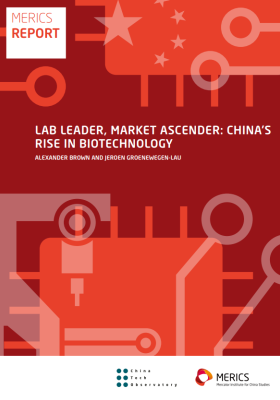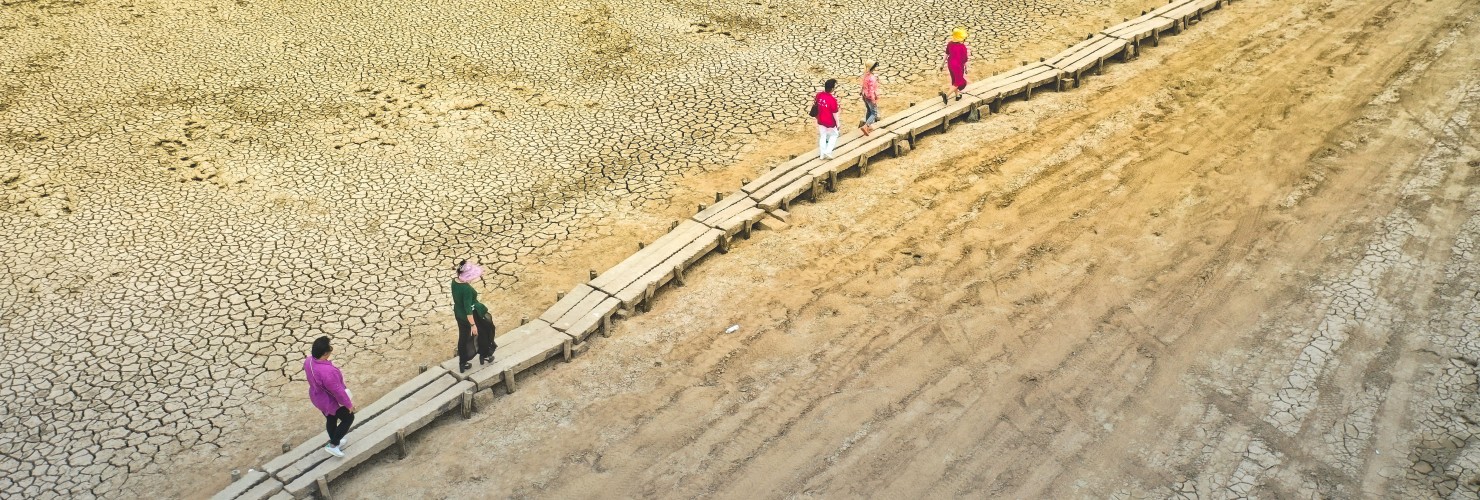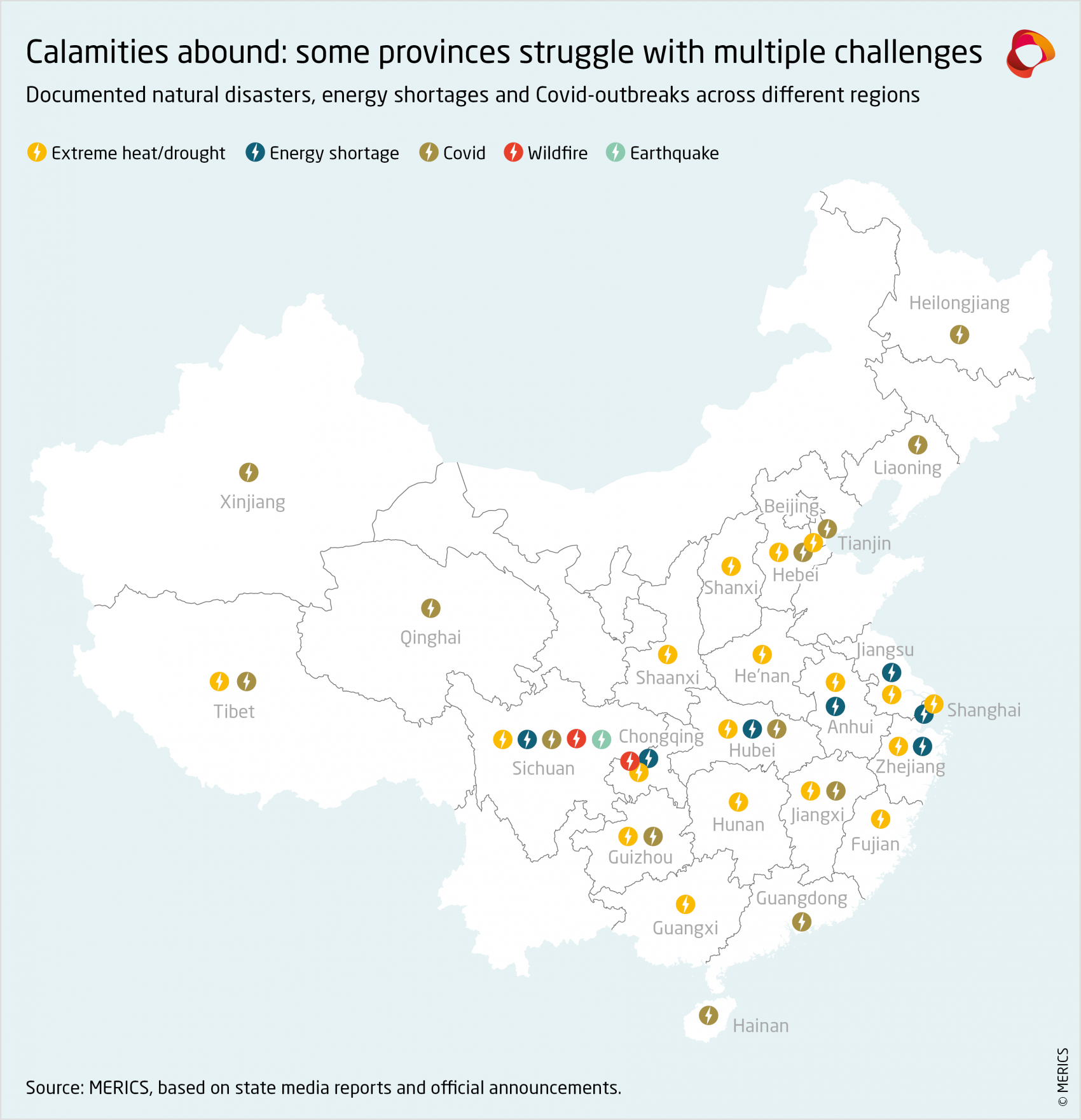

Challenges mount ahead of Party Congress + Xi's return to the global stage + US stock-market listings
TOP STORY
Lockdowns, heatwaves, shortages – challenges mount ahead of Communist Party Congress
Heatwaves, drought and food, water and electricity shortages are flanking ongoing Covid-19-lockdowns as challenges Xi Jinping has to deal with as the National Congress of the Chinese Communist Party (CCP) approaches. In contrast to his vision of “common prosperity,” household incomes as well as small and middle-sized enterprises are under pressure. Some local government coffers are running low, raising the question of who will pick up the tab to help them. This could undermine trust in the party state at a time in which the CCP is banking on popular support.
More than 260 Chinese weather stations recorded their highest-ever temperatures when an intense heatwave swept over large parts of China. The extreme heat also caused severe drought, shrunk rivers and lakes and hit hydropower production along the Yangtze River. Wuhan, Hangzhou, Shanghai, Suzhou, Nanjing and other big cities introduced measures to limit electricity usage – and social-media users reported a string of deaths in workplaces and homes as a consequence of high temperatures and limited electricity supplies to combat the heat.
Although temperatures have cooled slightly, food-supply issues and water and electricity shortages look set to continue. China’s rice harvest, which typically runs from September to November, is expected to be hit hard. The global food crisis and commodity-price rises will make it difficult for Beijing to import replacement grain, but it has recently massively built up its reserves. China has been criticized for hoarding grain and contributing to global price hikes that started after Russia invaded Ukraine. It will be interesting to see whether Xi will feel pressure enough to tap the country’s huge grain reserves.
In addition, hard lockdowns to contain Covid-19 continue to impact the economy and people’s livelihoods. Some 33 cities with over 65 million inhabitants are currently in lockdowns that look unlikely to be relaxed in the near future. The densely populated mega-city Chongqing experienced a particularly difficult month as extreme heat, drought and electricity shortages amplified the effects of ongoing Covid control measures. China’s strict zero-Covid policy limited options for relief efforts when a 6.6 magnitude earthquake hit a rural region of Sichuan Province west of Chongqing.
MERICS analysis: “Ahead of the party congress, the CCP leadership is faced with multiple stressors affecting China’s growth, social development and citizens’ welfare,” says Katja Drinhausen, Head of MERICS’ Politics & Society Program. “Only a year after Xi declared victory over absolute poverty, China is facing the risk of a backsliding if the government fails to provide emergency funds, tax relief and other substantial forms of support.”
Media coverage and sources:
METRIX
1,100
This is the number of cyberattacks which Chinese internet security experts claim the US National Security Agency (NSA) launched in June alone on the Northwestern Polytechnical University. The Xi’an-based institution, which develops weapons for China’s military, was said to be one of many Chinese cyber-targets that have recorded tens of thousands of attacks by the NSA’s Office of Tailored Access Operations. Western cybersecurity companies and governments have long relied on naming and shaming Chinese state-sponsored actors they accuse of cyberattacks. In a similar fashion, China has in recent years become increasingly vocal about alleged US government-controlled cyberattacks on Chinese institutions. (Sources: Vice, CVERC, Pangu Lab)
TOPICS
Xi prepares for his return to the global stage
The facts: Xi Jinping looks set to end his Covid-19-induced abstinence from foreign travel after 970 days. According to the Kazakh Foreign Ministry (although not as yet to any statement from Beijing), Xi will visit Kazakhstan on September 14 to meet fellow head of state Kassym-Jomart Tokayev. He is then likely to travel to Samarkand, Uzbekistan to attend the Shanghai Cooperation Organization’s (SCO) summit from September 15-16. He is there expected to meet Indian President Narendra Modi as well as Russian President Vladimir Putin.
What to watch: The timing of Xi’s in-person return to the world stage is unusual. It is rare for Chinese leaders to travel abroad in the weeks of intense political jockeying customary before CCP Congress, scheduled to start on October 16. It is normally only after this once-in-five-years meeting that the Party leader allows himself the time to go overseas – a trip that then also serves as a political victory lap. Xi’s participation at the G20 and APEC summits mid-November was expected to fulfill this latter function. This would be a month after his much-expected securing of an unprecedented third term at the helm of the CCP.
MERICS analysis: “The timing of this trip suggests that, at this point, international dynamics are seen as a greater risk to the system’s political stability and Xi’s ability to remain in power than the already challenging domestic situation,” says Helena Legarda, MERICS Lead Analyst. “With geopolitical tensions running high after the crisis in the Taiwan Strait, the release of the UN report on Xinjiang and the ongoing war in Ukraine, expanding China’s influence and shoring up support among regional allies has become a priority. Xi’s willingness to leave China only a month before the all-important party gathering also shows that he is confident about his chances of success at the twentieth Party Congress.”
Media coverage and sources:
Chinese companies can retain their US stock-market listings – for now
The facts: After months of uncertainty, Chinese and US financial regulators on August 26 struck a deal that gives Chinese companies the chance to remain listed on US-stock exchanges. Starting mid-September, US officials will be able to inspect and investigate the audits of accounting firms in Hong Kong to make sure their scrutiny of US-listed companies is adequate. But Washington also said Chinese companies would face delisting by early 2024 if they failed to honor the agreement. Many of the 261 Chinese companies listed in the US are not fully compliant with listing requirements – a unique privilege that the US ended in 2020 with the Holding Foreign Firms Accountable Act. Beijing has been reluctant about foreign access to its auditing companies on the grounds of national security.
What to watch: Successful audit-inspections promise to again boost the attractiveness of Chinese company’s stocks in the US. Yet the agreement has its limitations. Interpretations seem to differ substantially on both sides of the Pacific, particularly regarding the extent to which Chinese regulators will be part of the auditing process. Second, China’s potent cyber-regulator, the Cyberspace Administration of China (CAC), will try to limit US access to Chinese company-data, particularly in the technology sector. Third, many of the companies in question are state-owned enterprises that will not be able to comply with the new deal because Beijing will prevent the full audit of the strategic economic sectors they represent.
MERICS analysis: “Chinese tech companies continue to face challenging times: they are increasingly torn between their dependence on US capital, transparency requirements and consumer interests, and their obligation to protect data as part of China’s national security interests,” says Kai von Carnap, MERICS Analyst. “Many companies won’t be able to balance these competing interests and will sooner or later delist from the US, further decoupling US and Chinese financial markets. Raising money elsewhere will become one alternative for Chinese companies. In Europe, Switzerland and the UK have already seen first small listings.”
Media coverage and sources:
- PCAOB: Official announcement
- 21jingji.com: Announcement by the Chinese regulator (CSRC) in form of a Q&A
- Bloomberg: First listings in UK and Switzerland
Long-awaited UN Xinjiang report confirms wide-spread rights abuses
The facts: In the last minutes of her term as UN High Commissioner of Human Rights, Michelle Bachelet, on August 31, released her office’s long-awaited report on the situation in Xinjiang. Drawing a hefty rebuttal from Beijing, it gave a detailed assessment of violations from arbitrary detention and coercive labor to sexual violence and extensive surveillance, which had been documented over the past six years and followed up by Bachelet’s office through interviews with victims.
The report did not discuss whether Beijing’s treatment of Uyghur Muslims and other minority groups constituted genocide. But it concluded China had committed serious rights violations that “may constitute crimes against humanity” – the strongest wording allowed by the mandate of the Office of the High Commissioner of Human Rights (OHCHR). China’s Foreign Ministry said the report was the result of Western misinformation and noted 60 countries had opposed its release.
What to watch: For almost a year, China contested the release of the report, while many liberal democracies pushed for its publication before the end of Bachelet’s term. Its unequivocal assessment of substantial human rights issues in Xinjiang will lend new weight to the international debate about China’s actions. The report will embolden politicians and civil-society representatives calling for trade restrictions, sanctions and expanding human-rights legislation. That could in turn have an impact on trade, supply chains and political relations with China.
MERICS analysis: “The long tug-of-war over the OHCHR report shows the eroding common ground about the foundational principles of the UN system between China and its allies on one side and liberal democracies on the other,” says Katja Drinhausen, MERICS Head of Program Politics and Society. “This rift is set to intensify as countries around the world consider further responses.”
Media coverage and sources:
- OHCHR report: Assessment of human rights concerns in the Xinjiang Uyghur Autonomous Region, People’s Republic of China
- The Guardian: Five key points from the UN report on Xinjiang human rights abuses
- CGTN: China on OHCHR Xinjiang report
- CNN: China may have committed 'crimes against humanity' in Xinjiang, UN report finds
REVIEW
Innovate to Dominate: The Rise of the Chinese Techno-Security State by Tai Ming Cheung (Cornell University Press, 2022)
These days, western publications are full of stories about China’s ceaseless technological rise and the embattled US-China relationship. To compete, the message is, the West needs to innovate in key technologies that will help it control the markets – and battlefields – of the future. But where does China stand in this technological competition?
In “Innovate to Dominate,” Tai Ming Cheung compellingly argues that China is evolving into a “techno-security state” in order to win this race. This excellent book paints President Xi Jinping as the driving force behind the country becoming a “security-maximizing state.” Cheung sees Xi attempting to channel as much of China’s innovative energies towards minimizing dependency on primarily American, European, and East Asian high-end technologies – and towards developing the People’s Liberation Army (PLA).
One critical goal of this techno-security state is the implementation of “military-civil fusion.” In response to global disquiet that China’s research institutions and commercial enterprises are being brought into the PLA’s orbit, Beijing has recently downplayed the term. But this book leaves no doubt that military-civil fusion sits very high on Xi’s policy priority list.
However, Cheung shows that military-civil fusion is marching on much more slowly than expected by some and feared by others. China’s military and civilian industries have operated independently of one another for decades, and it has become obvious that the task of “fusing” them will take time. For example, the military procurement process has slowly opened to civilian enterprises. But only a small fraction of China’s companies have received permission to develop products and trade with the PLA, suggesting the process still has much room for improvement.
Cheung’s book is important because it helps us right-size the China challenge by identifying concrete areas where Chinese policy makers have achieved their goals and where they are falling short. There is substantive progress towards the vision of a techno-security state, but stubborn obstacles remain. China is neither an overwhelming innovation power nor a complacent laggard. Observers and policymakers focused on this country should bear that in mind.
Reviewed by Michael Laha, German Chancellor Fellow at MERICS
MERICS CHINA DIGEST
An article written by the Chinese Academy of History that views the country’s past isolationist policy as a self-defense strategy against Western colonization went viral on China’s internet, reflecting unease over the current closed borders, lockdowns, and crackdowns under the government’s zero-Covid-19 strategy. (22/08/30)
US restricts sales of sophisticated chips to China and Russia (The New York Times)
The US has imposed new restrictions on sales of sophisticated chips to China and Russia, now limiting the export of graphics processing units (GPU), citing the risk of them being used in military applications. The two largest US manufacturers Nvidia and AMD acknowledged the restrictions and said they are now required to seek export licenses to sell specific chips. (22/08/31)
Germany says it will expand military presence in Indo-Pacific (Reuters)
German Chief of Defence Eberhard Zorn told Reuters in an interview that Germany will expand its military presence in the Indo-Pacific. It will send more warships and join drills with allies as it keeps an eye on the "enormous" build-up of China's armed forces. (22/08/31)
Taiwan shoots down drone for first time off Chinese coast (Reuters)
Taiwan's military shot down an unidentified civilian drone that entered its airspace near Kinmen Island for the first time after it ignored warning flares. The Taiwanese government previously announced to take stronger measures to deal with drone intrusions, as such incidents increased after Nancy Pelosi’s visit. (22/09/01)
China's top legislator Li Zhanshu will pay official visits to Russia, Mongolia, Nepal and the Republic of Korea (ROK) from September 7 to 17, according to the party-state news agency Xinhua. (22/09/04)
China collecting DNA samples from across Tibet, says rights group (The Guardian)
A new report by Human Rights Watch claims that there is evidence that China is systematically collecting DNA samples across Tibet as part of a “crime detection” program. The program is part of a wider campaign to strengthen China’s grassroot-level policing system and build local DNA-Databases. (22/09/05)
Chinese social media sites are quietly putting digital fingerprints on screenshots (Vice)
Evidence emerged that Chinese social media services are putting hidden watermarks on screenshots, making images traceable when they are shared and possibly allowing them to monitor the spread of censored content. The watermarks were discovered by Chinese internet users who found numbers on screenshots that only became visible after changing the color settings of the picture. (22/09/06)
